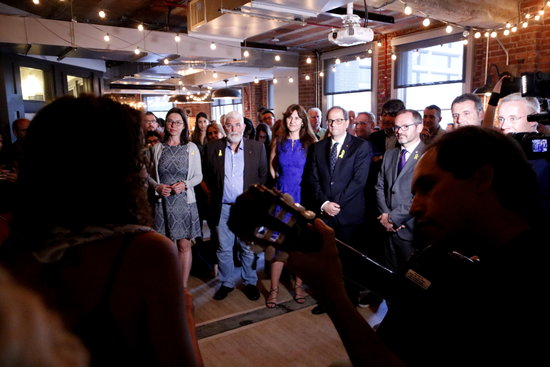Washington festival prepares to showcase Catalan culture
Smithsonian Folklife Festival in the US capital will celebrate cultural elements from human towers and sardana dancers to “big heads” and crema catalana

Anyone who has visited Catalonia may have seen the tall towers made of humans known as castells. Yet, a place you would never imagine seeing the unique constructions is the center of Washington DC. That is set to change this week when the US capital celebrates human tower building, along with other Catalan traditions, at this year’s Smithsonian Folklife Festival, which pays special tribute to Catalonia, as well as Armenia.
The Catalan tradition of making human towers is a celebration of teamwork and social cooperation. It is also extremely popular, with scores of castellers teams competing all year all over Catalonia, and involving thousands of people of both genders and all ages, from small children to full-grown adults. The festival will feature towers every day, with the largest towers due to be built on the second weekend of the festival, on July 7 and 8.
Yet, the celebration of Catalonia’s culture will go further than building human towers and will also showcase other traditional public performers. An example are “big heads,” or capgrossos, in which people dance and parade around while wearing outsized coloured heads made of papier-mâché. Another highlight for visitors will be dancers performing the traditional Catalan circle dance known as the sardana.
Meanwhile, with chefs such as Ferran Adrià and the Roca brothers boosting the international reputation of Catalan cuisine in recent years, it is no surprise that the festival will also feature popular delicacies. One example are bunyols, the doughnut-like pastries that often have toppings or fillings, as well as Catalonia’s own special version of crème brûlée, known as crema catalana.
Visitors to the festival on the evenings of July 5 and 7 are also in for a special treat, as that is when the striking firework parade known as a correfoc is due to take place. A popular event during local festivals in Catalonia, people dressed as diables (devils) run, dance and jump in showers of sparks as they swing around poles with large fireworks attached, all to the hypnotic sound of rhythmic drumming.
In Washington on Tuesday evening, culture minister Laura Borràs expressed her satisfaction at the number of Catalans arriving to take part in the Smithsonian Folklife Festival, which begins on Thursday. “Traditional Catalan culture is very rich and diverse, and has many facets, and here they will get to see all of them. All of this richness boosts our profile as a country,” she said, describing the festival as “a magnificent shop window to show off popular Catalan culture.”